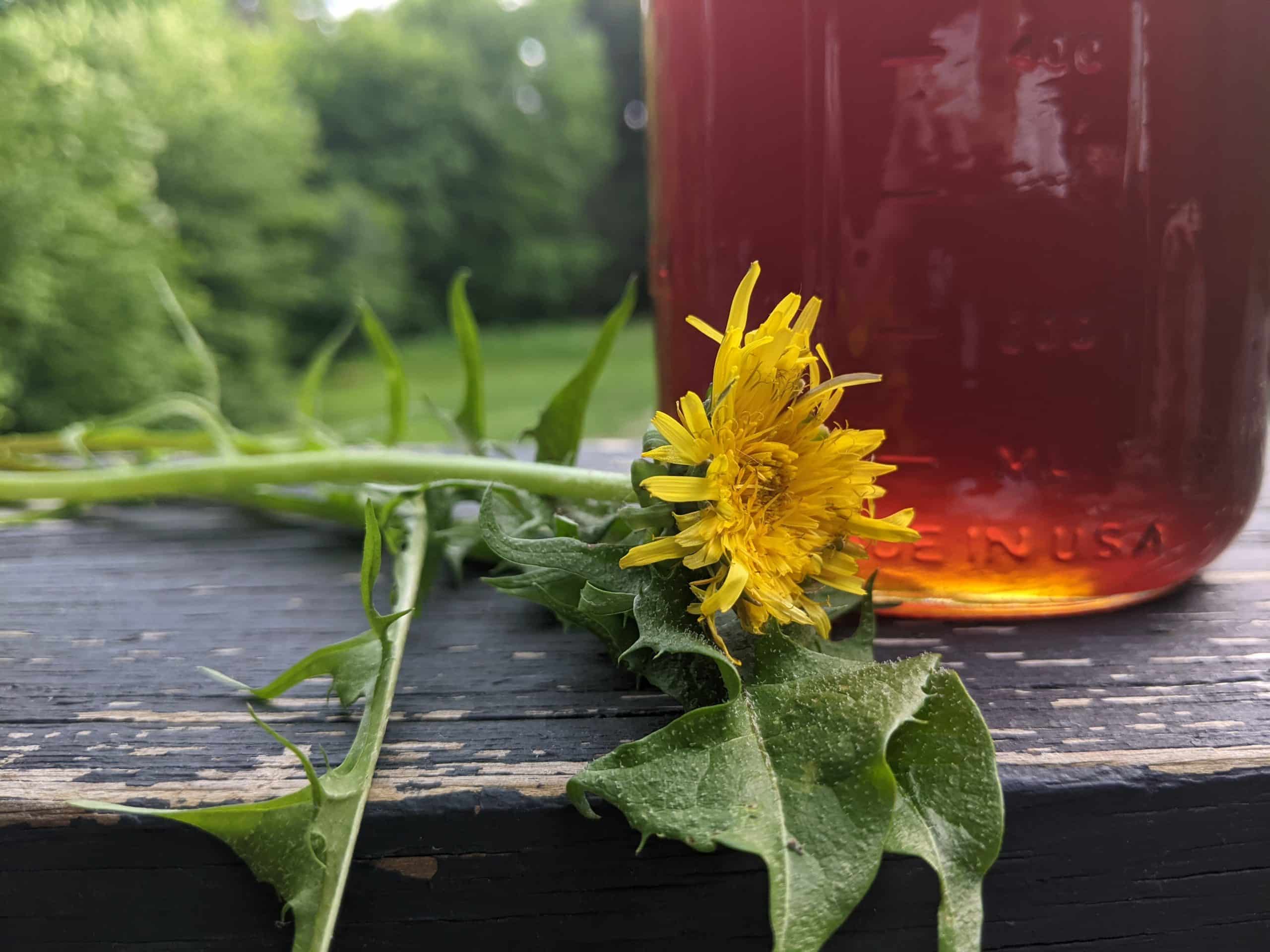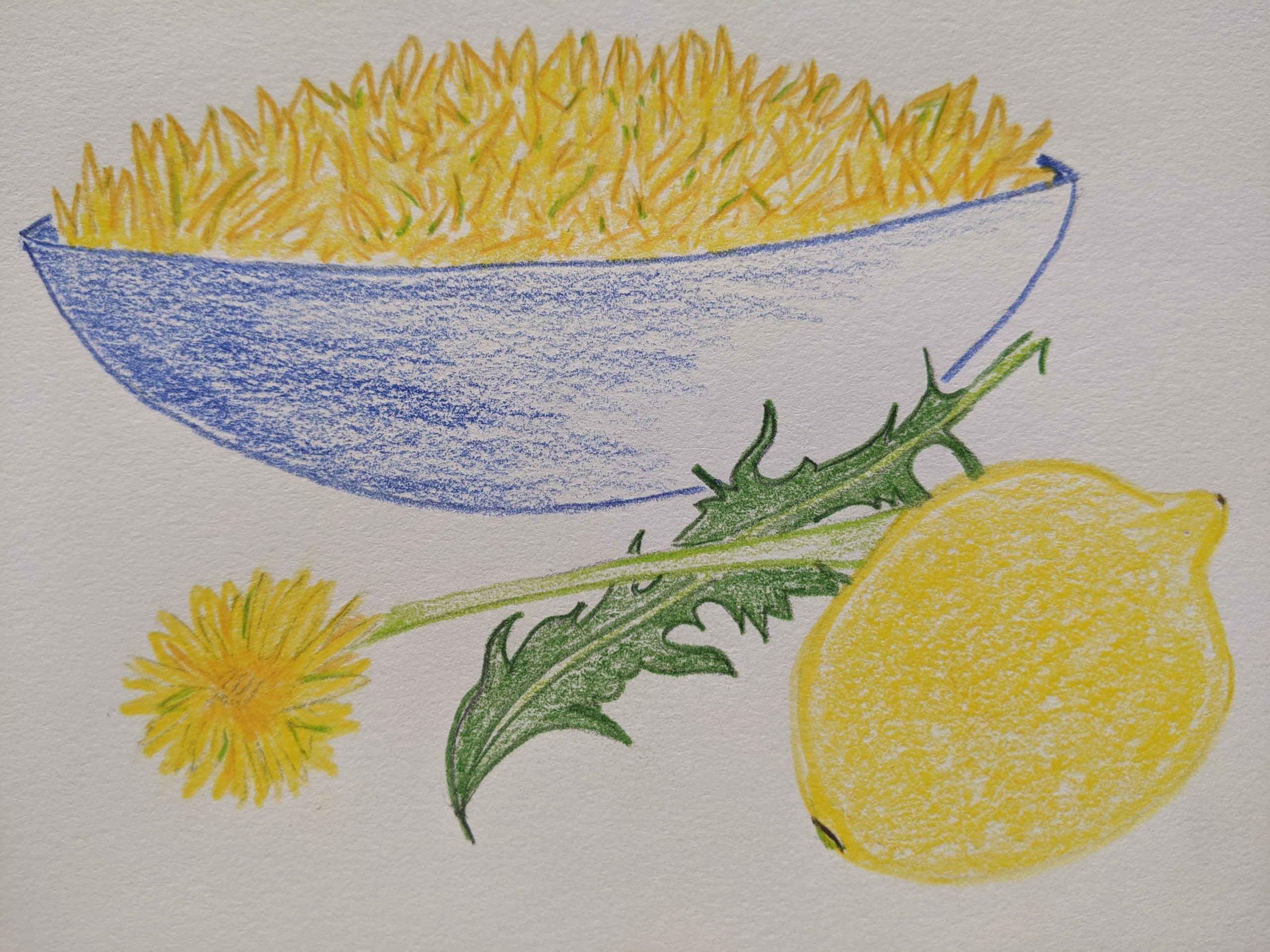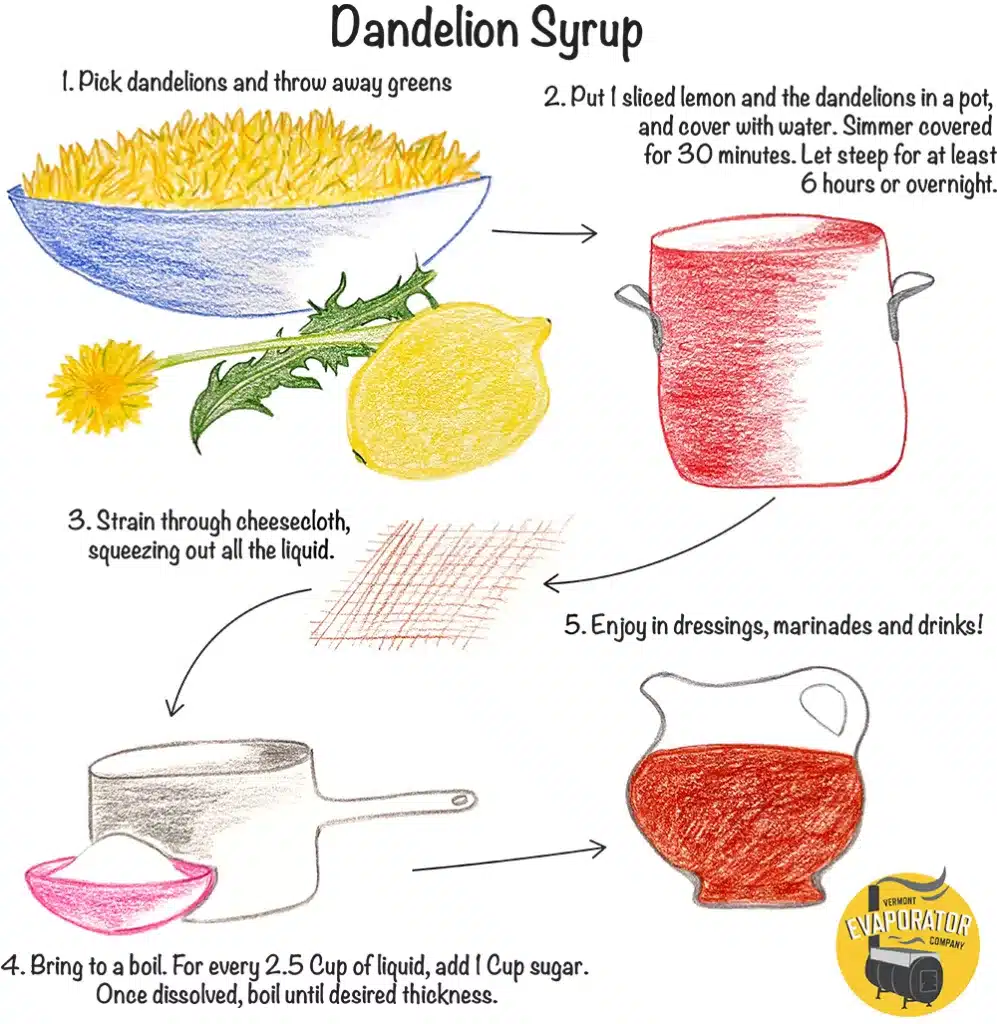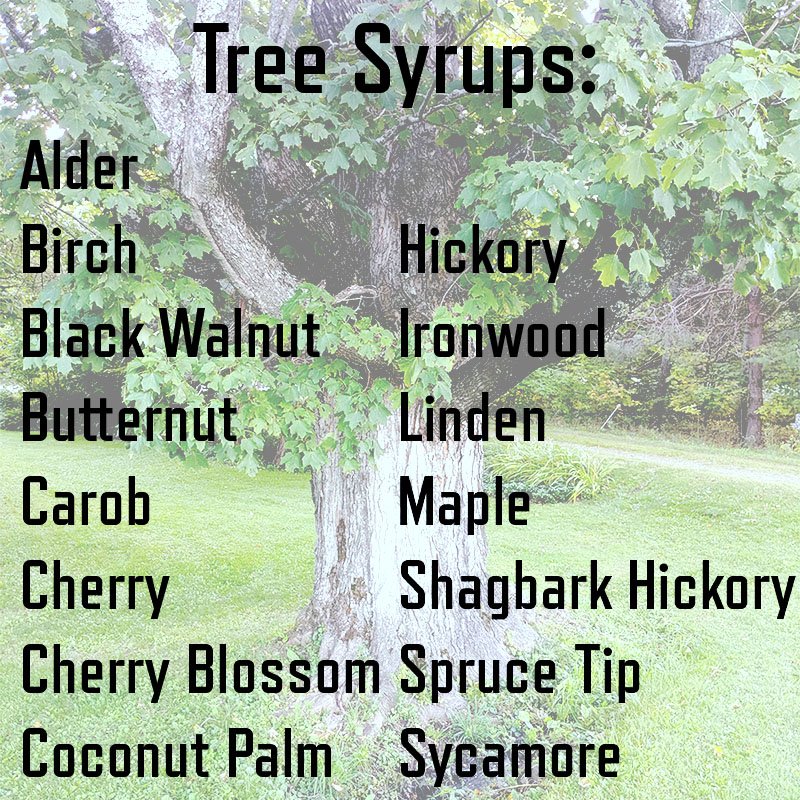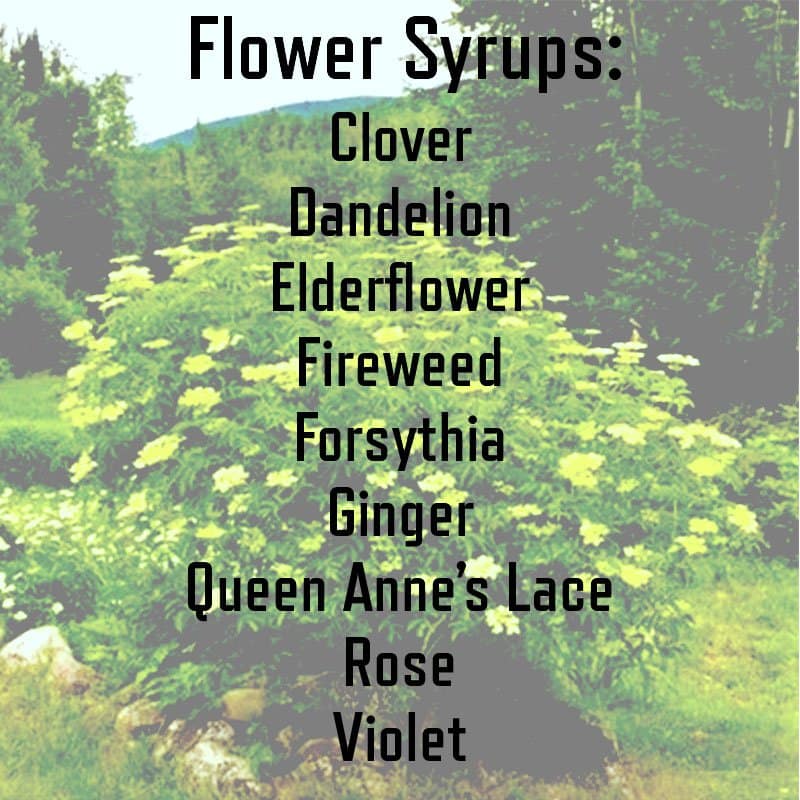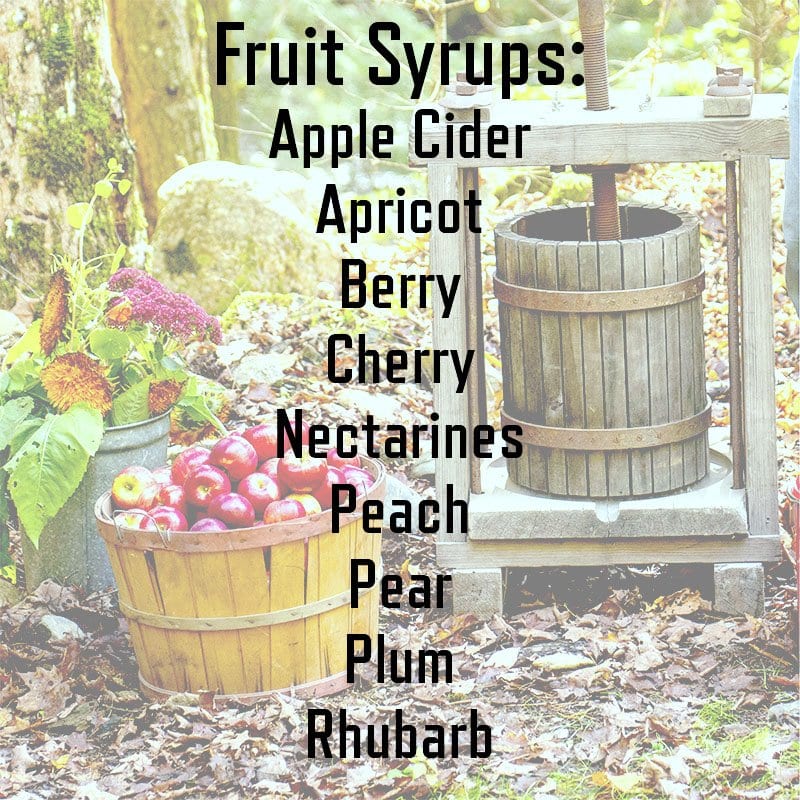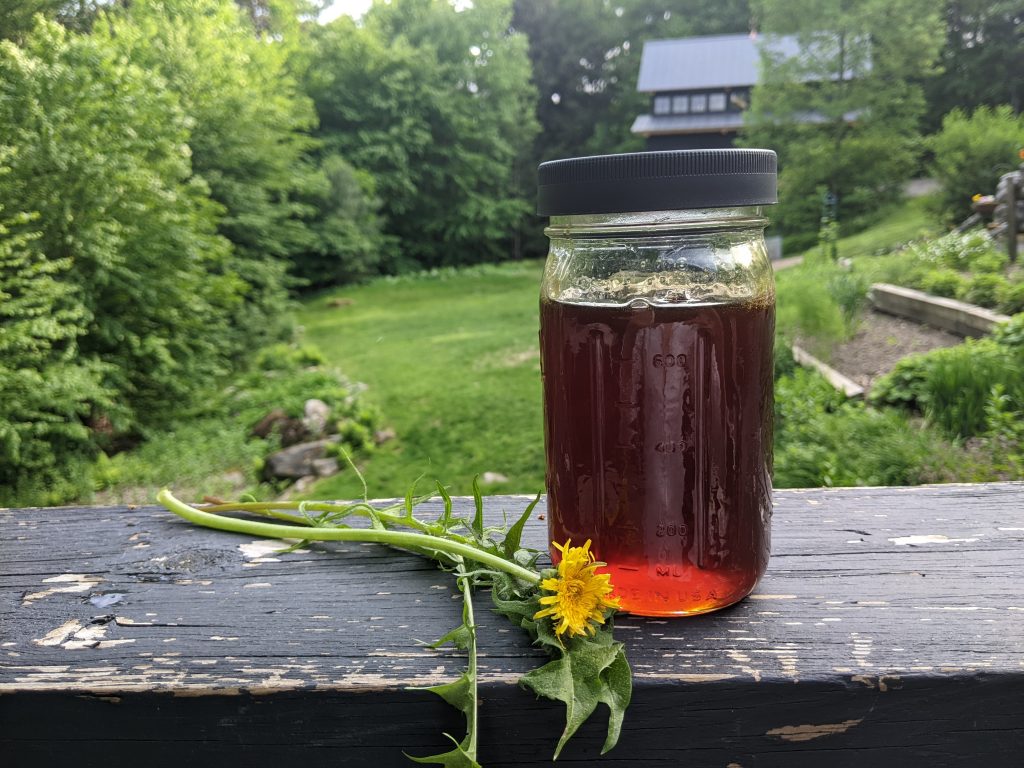Last weekend, compelled by a curious smell coming from the kitchen, I arrived there to find my teenage daughter engaged in that sincerest form of flattery: imitation. She, in fact, was in the process of turning the largest mound of dandelion petals I have ever seen into dandelion syrup. Besides the petals, she was accompanied by water, a lemon, and an equally impressive mound of sugar.
I’ve written about the taste of dandelion syrup before. That was in another off-season, beyond-maple post. In that post, I described the tastes of elderflower, rhubarb, blueberry, raspberry rhubarb, apple cider, birch, black walnut, spruce tip and sweet sorghum syrups.
Silver Lake Syrups made the dandelion syrup I tasted before. I described their award-winning dandelion syrup as “honey-colored and smell[ing] just like a field of the eponymous flower would without its friend-and-neighbor green grass.” I found the taste “light, delicate and evocative of the classic honey-lemon combination.” It was, I concluded, “clearly absolutely perfect for teas.”
What I learned then but did not share was that dandelion syrup was a popular substitute for honey in Europe during and after World War II. Now, as any old Google search will show, dandelion syrup is a popular vegan substitute for honey. Here’s how to make it:
Step 1: Pick Loads of Dandelions!
This first part is a fun part. Go outside and pick a ton, a load, or as many dandelions as you can. Be sure to pick the dandelions from places you know are herbicide and pesticide free. Dont worry about getting the whole plant. The only part you need is the yellow part.
Step 2: Remove the Greens
Remove all the greens. This will take a while. Take your time, turn on some good tunes, and enjoy slowing down.
Step 3: Boil in a Pot
Place your flower heads in a large pot. Add one sliced lemon and cover with water. Bring to a boil, reduce the heat, and simmer for 30 minutes, covered. Turn off the heat and leave, covered, for at least 6 hours or overnight. This allows the flowers to steep, like a tea. This is where the dandelion flavor comes from.
Step 4: Strain and Sweeten
Strain through cheesecloth into a smaller pot. For every 2 1/2 cups of liquid, add 1 cup of sugar. Bring to a boil, stirring to dissolve the sugar. Boil to desired thickness. You can achieve a syrup-like consistency by boiling until you reach the syrup reading on a maple syrup finishing thermometer. Alternatively, boil until reaching about 219 degrees Fahrenheit on a candy thermometer, about the temperature for syrup! Or you can test the thickness old school style: drip a bit of the hot syrup onto a cold plate, like from the freezer. This will give you an idea of the consistency once cooled!
For a honey-like consistency, you will have to boil a bit more. Test the thickness by cooling small bits and evaluating for spreadability as you go.
Quick Start Guide
Below is a quick reference for making your own dandelion syrup!
When you taste your dandelion syrup, you will see that there is something in the combination of sweetness and this common flower that evokes honey. We love ours in tea, but we also love to enjoy it in salad dressings, marinades, and other drinks.
Other Types of Syrups
Maple is a special type of syrup, both for us and for the world. Its unique flavor is the syrup of choice for everything from pancakes to waffles to salad dressings and homemade baked goods. But there are many other syrups that can be made! They fall into 3 main categories:
1. Tree Syrups
Most of these syrups come from the sap of trees. Like making maple, the sap is boiled down to make syrup. Each type of tree syrup has a different sap-to-syrup ratio. For example, for a sugar maple, it takes about 40 gallons of sap to make one gallon of syrup. Bur for birch syrup, it can take as much as 100 to 120 gallons of sap to make a gallon of syrup.
A few of the tree syrups listed below, like cherry blossom and spruce tip, are steeped and then boiled with water and sugar just like the dandelion syrup recipe above.
Here is a list of some of the most popular types of tree syrups:
2. Flower Syrups
These syrups come from a steeped mixture of flowers or plants, mixed with water and sugar, very similar to the dandelion syrup recipe above. Below is a list of some different types of flower syrups:
3. Fruit Syrups
These syrups come from the boiled-down juice of fruits. Below is a list of some types of fruit syrups
All these other types of syrups have their own unique flavors. We’ve taste-tested many different types of syrup, including elderflower, rhubarb, blueberry, raspberry rhubarb, apple cider, birch, black walnut, spruce tip, and sweet sorghum syrups. You can read about our favorites from that taste-test in our previous blog.
HAPPY SYRUP MAKING, FROM OUR FAMILY TO YOURS!
FOR MORE INFORMATION ON OTHER TYPES OF SYRUP YOU CAN MAKE IN YOUR OWN BACKYARD CHECK OUT THESE OTHER BLOGS:

